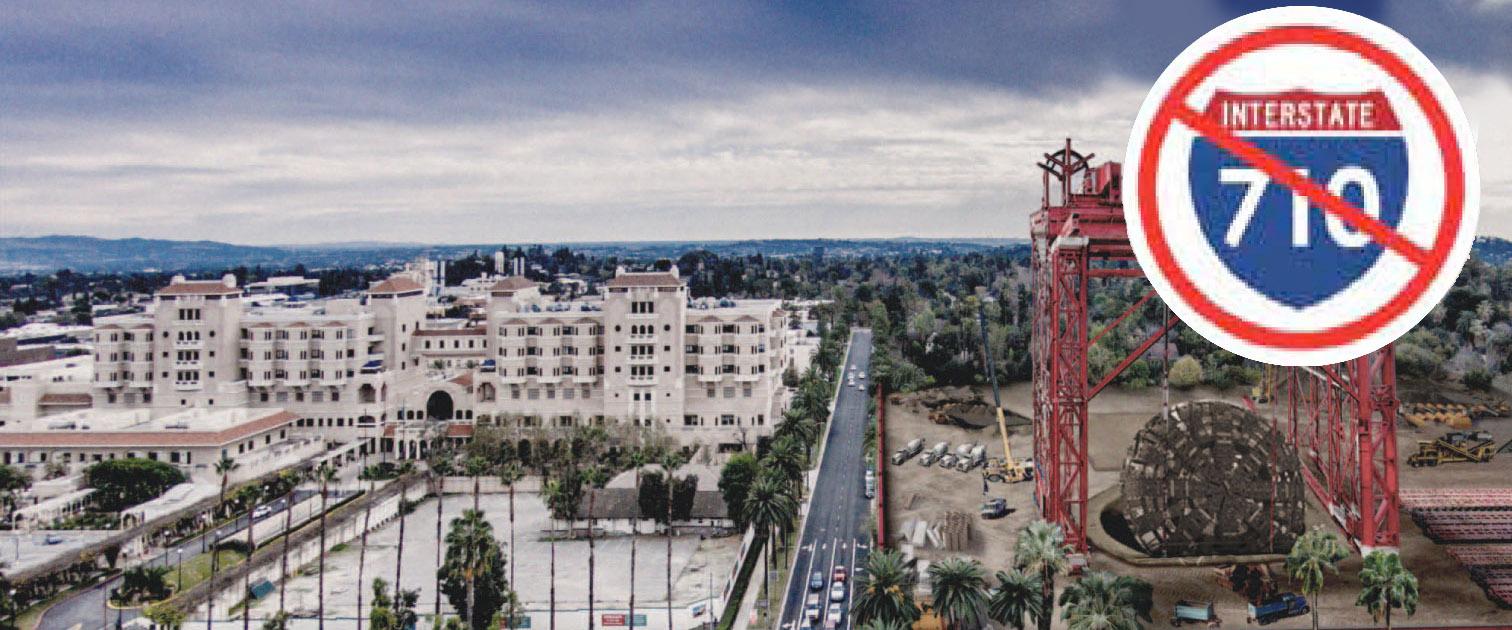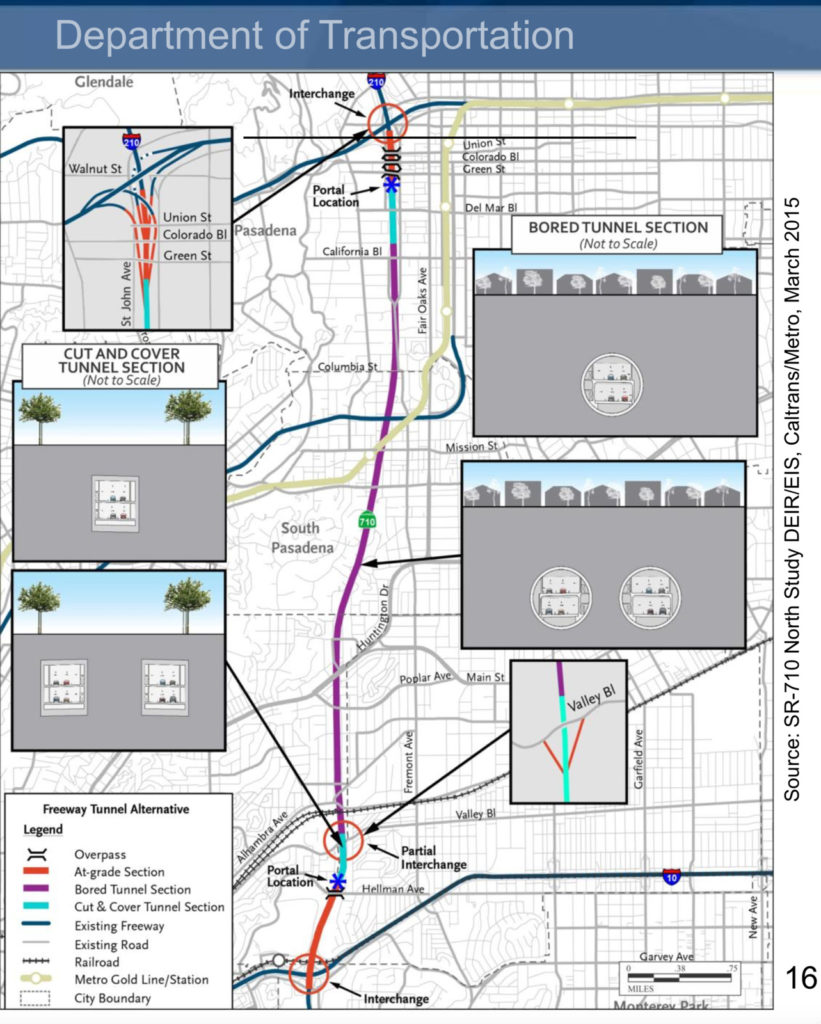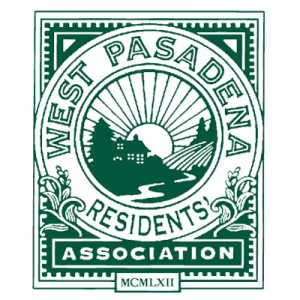1989 – The WPRA drew attention to the revival of the extended Long Beach Freeway campaign, now referred to as the SR-710 “closing the gap” freeway.
1991 – The WPRA sponsored a Freeway Forum focusing on 710 Freeway Final Environmental Impact Statement (FEIS) and the 25-year-old freeway plan. At this time, the City was supporting the closing of the 710 gap with a freeway through Pasadena and South Pasadena. The WPRA Board secured an independent traffic consultant to provide an independent perspective on the impacts of the proposed project.
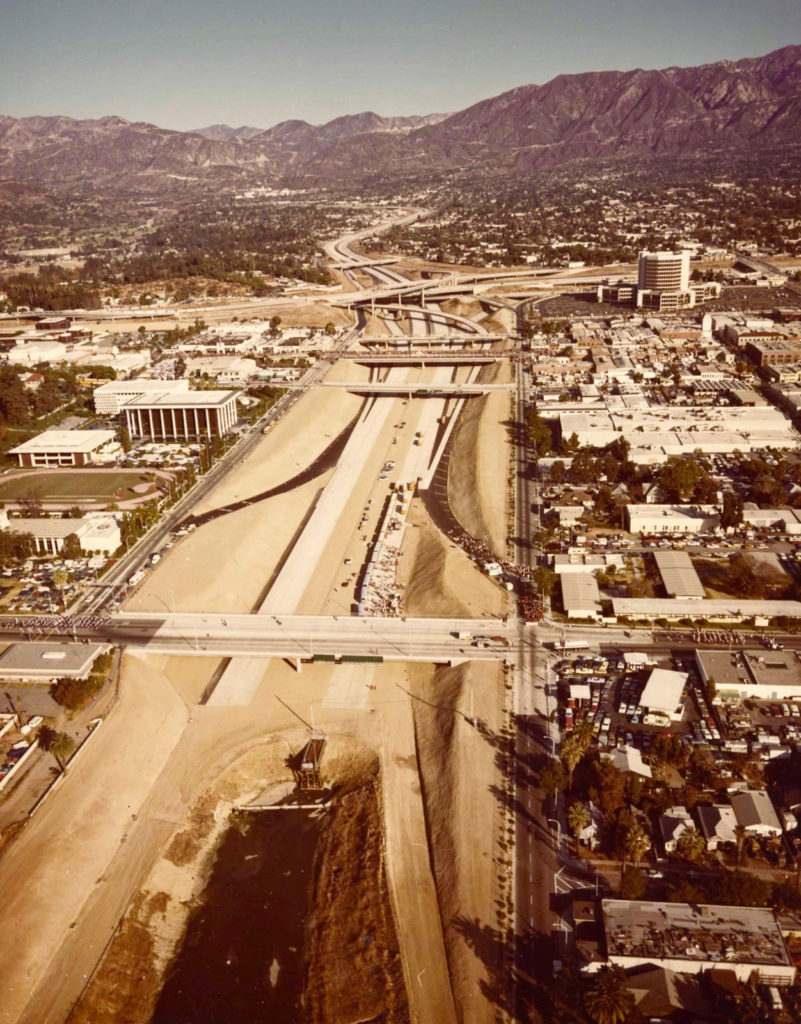
Click to enlarge.
Courtesy of the Archives at Pasadena Museum of History (C12-133)
1992 – In response to the concerns voiced during the June, 1991 WPRA Forum on traffic issues and the 710 Freeway, the Pasadena Department of Public Works commissioned a traffic circulation study of certain residential and commercial streets in the Southwest Pasadena area.
WPRA strongly advocated that commuter north-south traffic on Orange Grove be addressed with factual statistics.
1993 –The WPRA initiated the Southwest Pasadena Traffic Study sought realistic methods to manage and “diffuse” traffic in areas that are overburdened by commuter traffic, especially feeding into the Pasadena Freeway and traffic exiting the end of the 710 “stump” at California.
2001 – WPRA reported the results of a city-wide election regarding the proposed 710 freeway extension. West Pasadenans bucked the city vote by opposing winning Measure A (which established the City’s official position as “in favor” of the extension) and by supporting losing Measure C (which would have mandated a city-wide traffic and transportation study).
2002 – The WPRA supported efforts of West Pasadena residents who lease homes from Caltrans along the 710 corridor to form the “Caltran Tenants of the 710 Corridor”.
2012 – WPRA publically ramped up its full scale opposition to the proposed SR710 freeway tunnels with an alert to the community stating that Metro was pushing a predetermined agenda with misleading information.
2013 – WPRA continued to publically explain through its newsletters how Metro’s proposed SR710 tunnel project was unfeasible to build and would not ease neighborhood traffic congestion.
2014 – Regarding Metro’s presumed intention to close the SR-710 gap with tunnels, the WPRA committed to further independent analysis of all the elements of the plan that could negatively and uniquely impact Pasadena.
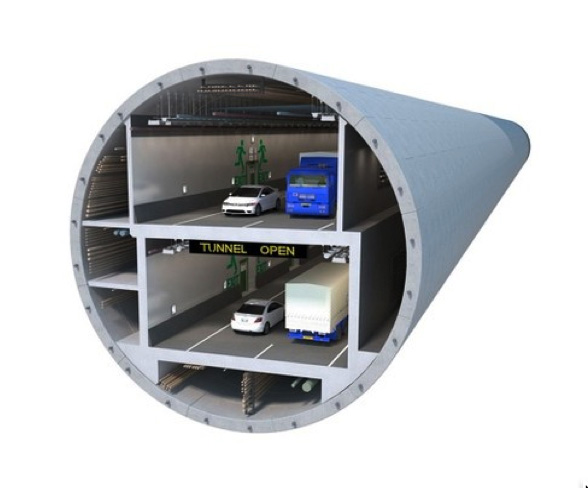
2015 – WPRA increased its vigilance of opposition against the proposed SR-710 tunnel alternative by devoting almost the entire winter publication of WPRA’s The News for public awareness and asking for additional funding to fight the tunnels project and creating an independent expert response team.
WPRA analysis found the SR-710 Draft Environmental Report grossly inadequate. The WPRA response team believed the report showed clear bias in favor of the tunnel alternative.
2016 – The WPRA continued to alert the public about the adverse environmental impacts caused by the future tunnel.
WPRA supported the Connecting Pasadena Project which created an urban development design which would replace the North SR 710 stub dug deep into the ground for the proposed freeway or tunnels intended to “close the gap.”
2017 – WPRA celebrated LA Metro’s Board’s unanimous vote against the SR710 tunnel alternative and its selection of the Transportation System Management/Transportation Demand Management (TSM/TDM) alternative.
2018 – In lieu of the rejected tunnel alternative, WPRA supported all of Metro’s proposed mobility improvements except the closure of the 134/210 on and off ramps.
WPRA urged City Council to cite Caltrans for code violations and call out Caltrans’ unethical tactics toward the current Caltrans 710 corridor property renters and buyers.
WPRA hired counsel in the advent that WPRA and other stakeholders needed to sue Caltrans to finally stop any potential movement to reinitiating the tunnel alternative project.
2019 – Caltrans dropped the tunnel alternative entirely from future development. In view of the victory, WPRA released its legal counsel.
